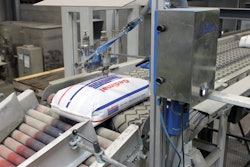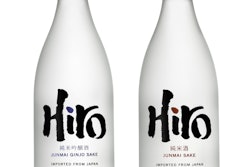A recent edition of Sterling Anthony’s Packaging Insights newsletter included a piece headlined “School Spirit.” In it, Anthony addressed the importance of the university to the packaging community. He talked about The Dean’s List of colleges, universities, and institutions providing graduate courses in packaging, and he stressed how important it is that these institutions provide a solid academic base.
Picking up on Anthony’s theme and moving back a step or two, it’s useful to ask ourselves this question: What draws students into packaging programs in the first place? And once they’re in such a program, is the content they encounter properly preparing them to meet the challenges of emerging packaging technology? More important, are they being given the right mix of tools that will turn them into innovators and solution providers once they’re out in the working world?
Fortunately, students are becoming more and more aware of packaging through high school counseling, family members, and friends. This fall, 20% of the freshman students enrolling in packaging indicated they have a father, mother, uncle, or cousin in packaging. Students have also mentioned the recent Discovery Channel Modern Marvels (www.youtube.com/watch?v=rFTDip3sZx0) as an influencer when it comes to seeking a career in packaging.
It’s good that such everyday, ordinary components of society are influencing young people favorably where packaging as a course of study is concerned. But once their interest is piqued, it’s crucial that PKG 101—at MSU or at other key Packaging Education Institutions—hooks them and moves them firmly into the $600 billion global business of packaging. More and more corporations are inquiring about providing basic and advanced packaging training to employees from other disciplines moving into packaging for career development.
PKG 101 is a general course in packaging principles covering the growth and development of the field and the technological and motivational problems involved in present day packaging. The course content defines the functional performance of the package in terms of containment, protection, communication, utility/convenience, and the interaction with the hazards encountered in the environments consisting of the physical, the atmospheric, and human use. This interaction of the functional elements with the environmental elements is taught in a matrix format by Dr. Hugh Lockhart, a recognized packaging academic pioneer at MSU School of Packaging, and continues today as the basis for defining “what is a package?”
PKG 101 expands on the history of packaging, package materials, material performance, and manufacturing processes. The students learn that “breakthroughs” in packaging and innovation have coincided with key historical events. There’s no better example than Appert’s 1809 discovery that Napoleon’s troops could be fed more efficiently if food sterilized in glass could be made widely available. More recently, we have the example of Meals Ready to Eat (MRE) packaging for our troops in Iraq and Afghanistan.
PKG 101 also drives home a message about technology and how packaging technology breakthroughs like Tetra’s development of aseptically packaged shelf stable milk have contributed to the betterment of society. No wonder the Institute of Food Technologists, an organization of food scientists devoted to improving the production and distribution of food, selected aseptic packaging as the most significant food science innovation in the past fifty years.
Two other key themes appropriately included in PKG 101 revolve around the consumer and around cost savings. Students are reminded that everyday household products such as aerosol sprays originated with the “bug bomb” in World War II. As for cost savings, packaging professionals have shaved costs from consumer goods packaging in countless ways while always ensuring quality and safety, and students in PKG 101 are introduced to a few examples. They’re also shown how cost savings and sustainable packaging have dovetailed in today’s society and will continue to do so in the future.
In the years to come, we’ll see considerable change in packaging with the growth of sustainability, open innovation, packaging as a key marketing tool, new laws and regulations, design thinking, and globalization. Like never before, today’s packaging education institutions need your help to provide insight and support to ensure that we are staying current and looking to deliver new thinking to the students who will be working in the global packaging field in your companies in the near future. Help us answer this question: Is the content of our courses preparing the student to meet the changes in packaging that you are seeing in your organizations?
We look forward to you responding to this question. Contact me and please contact and work with the packaging institutions you are associated with—this is important for the Future of Packaging.
Finally, I encourage all readers of this article to seek out the opportunities at your local high schools and service organizations to promote packaging as a career. You will find that all the packaging education institutions will provide you with an abundance of material on their programs to share with your audience.


























